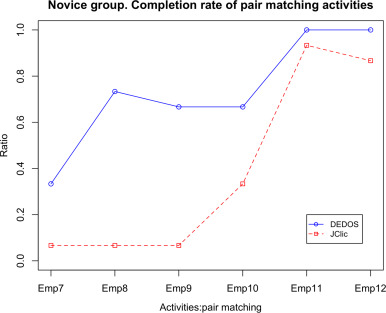
David Roldán-Álvarez, Estefanía Martín, Manuel García-Herranz, Pablo A. Haya
International Journal of Human-Computer Studies. 4 Jun 2016, pp. 18-34, doi:10.1016/j.ijhcs.2016.04.011 [download] (JCR, IF 2016: 2.863, Q1 5/22 Computer science, cybernetics)
- We study the learnability of educational authoring tools for preventing teachers’ rejection or abandonment.
- We evaluate two interaction paradigms of authoring educational tools: menu-based versus direct-manipulation.
- The interaction paradigm of the authoring tool has an important impact on the tool’s learning curve’s entry point.
- A consistent interaction metaphor allows teachers creating educational activities smooth and fast.
Abstract
Few teachers include information and communication technology in the classroom, despite their potential for increasing attention and motivation for students. Educational authoring tools are intended to turn teachers into designers and deliverers of technology-enhanced educational content, and increasing the adoption of these tools is a key element for speeding up this transformation. This paper emphasizes the importance of learnability for preventing rejection or abandonment by of such an authoring tool, and how acceptance is deeply affected by the interaction paradigm and the creation metaphor used in the tool. We present an analysis comparing two design paradigms: the widespread menu-based and choice-guided interaction paradigm versus a consistent metaphor with direct manipulation. The latter was implemented in DEDOS-Editor, a novel authoring tool that allows the creation of diverse educational activities that can be performed on different devices, such as PCs, digital blackboards, tablets, and multitouch surfaces. An experimental study shows the tremendous impact that interface choices have on the tool’s learning curve. The results provide the first mapping of the choice of a direct-manipulation interface and its effect on the learning curve’s entry point, as well as a consistent interaction metaphor with smoother and fast-growing learning curves. This allows users to complete more tasks and gain more knowledge through experience, in contrast to menu-based interfaces. The initial use of the tool is thus made easier for users with no experience or information about the tool, and the advantages of experience and expertise in facing new challenges are facilitating. This work also highlights the appropriateness of learning curves as a tool for measuring learnability.